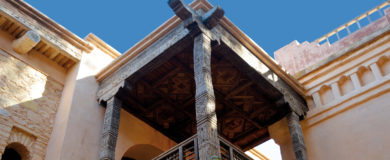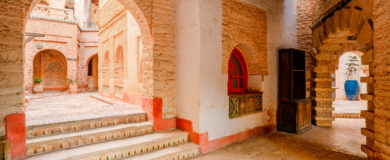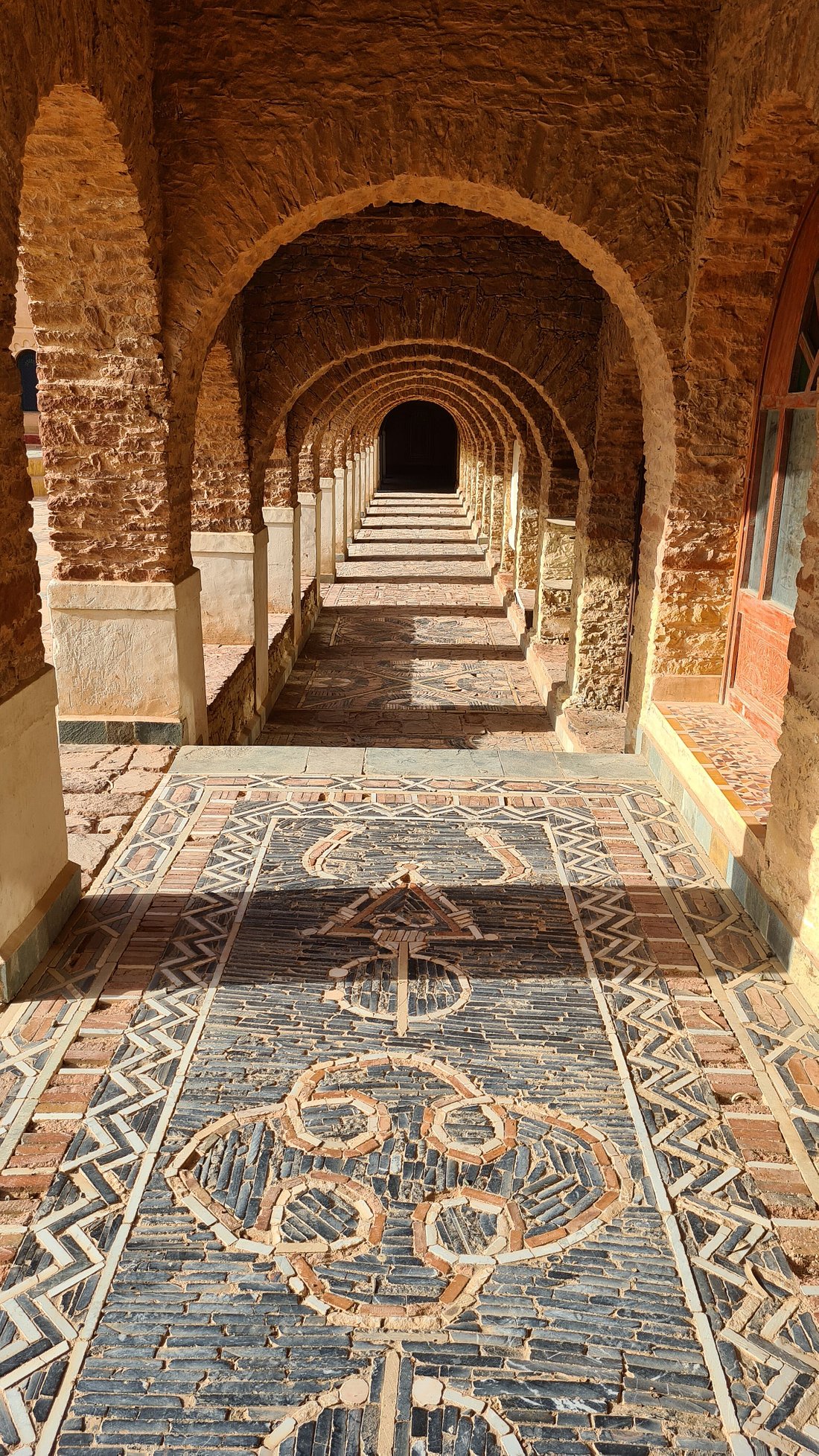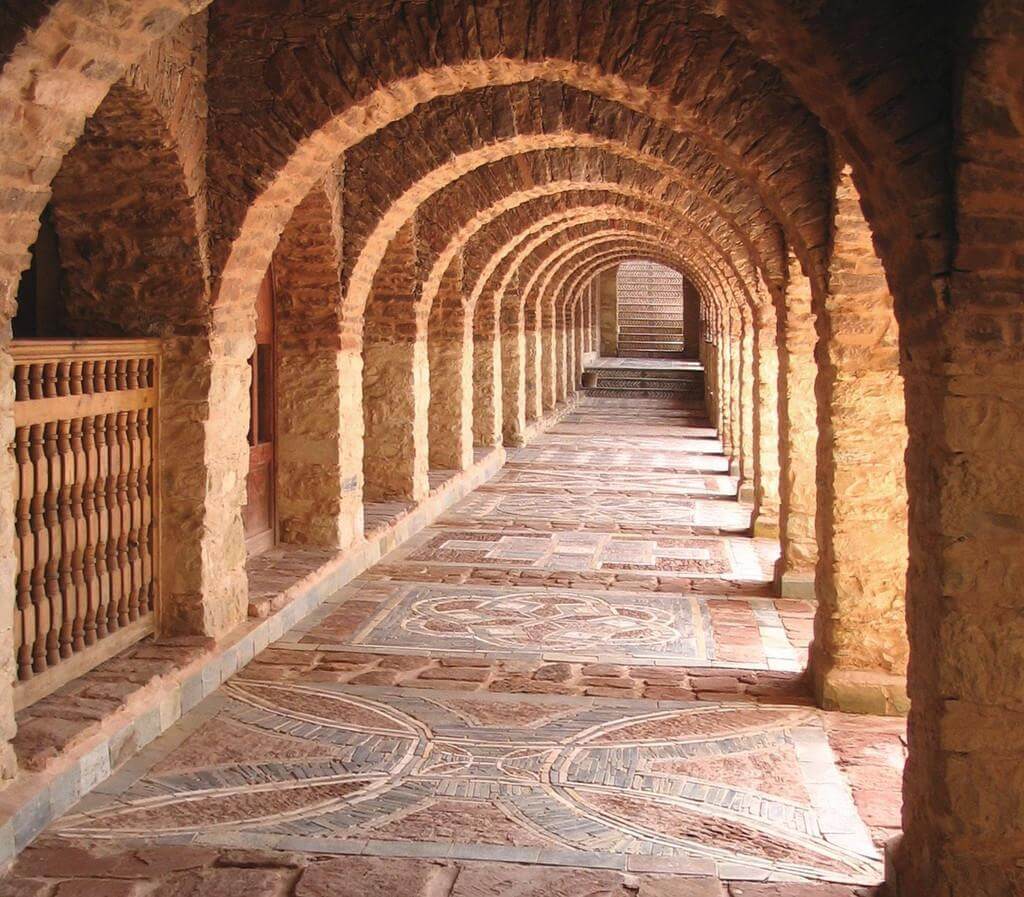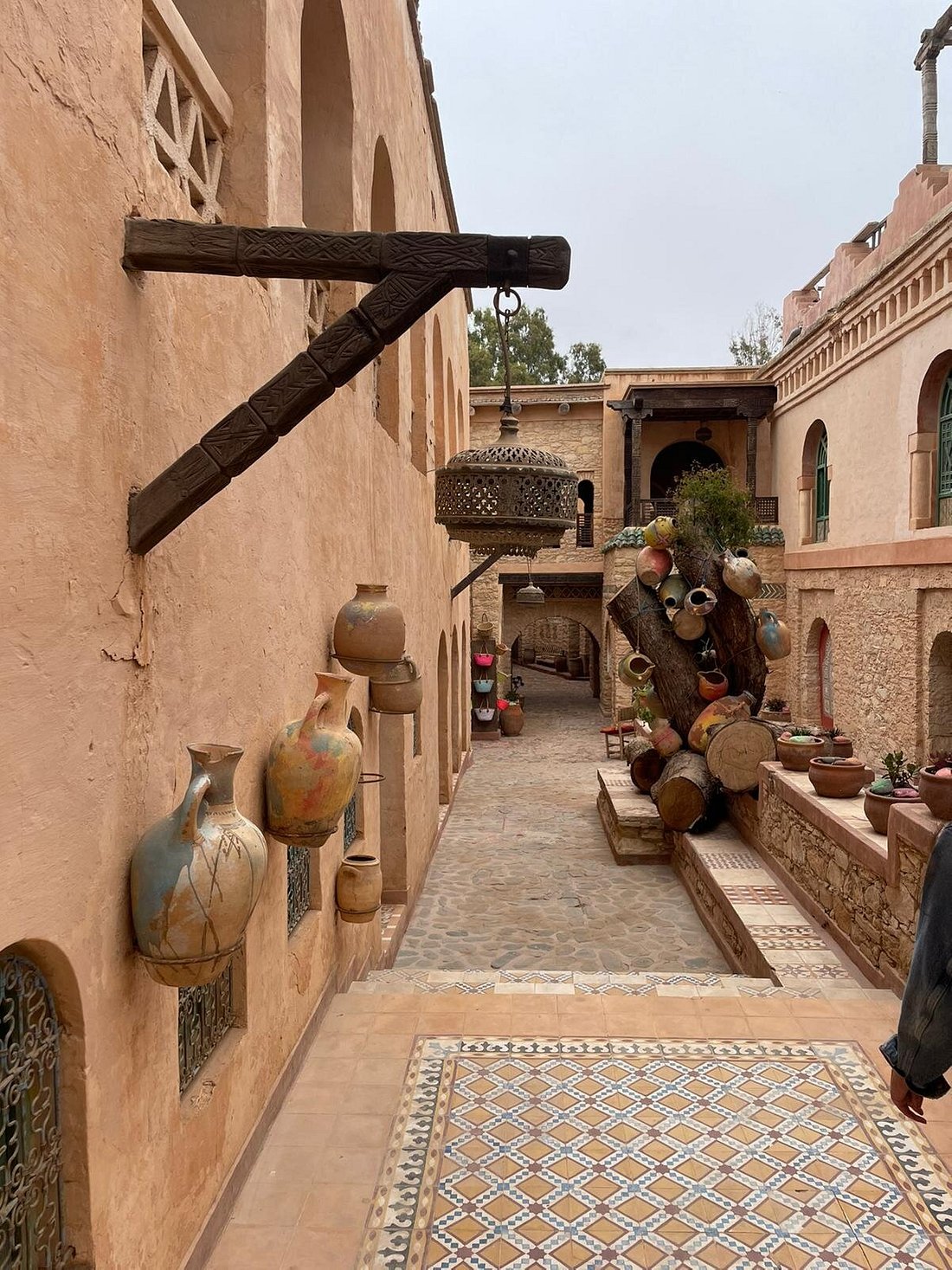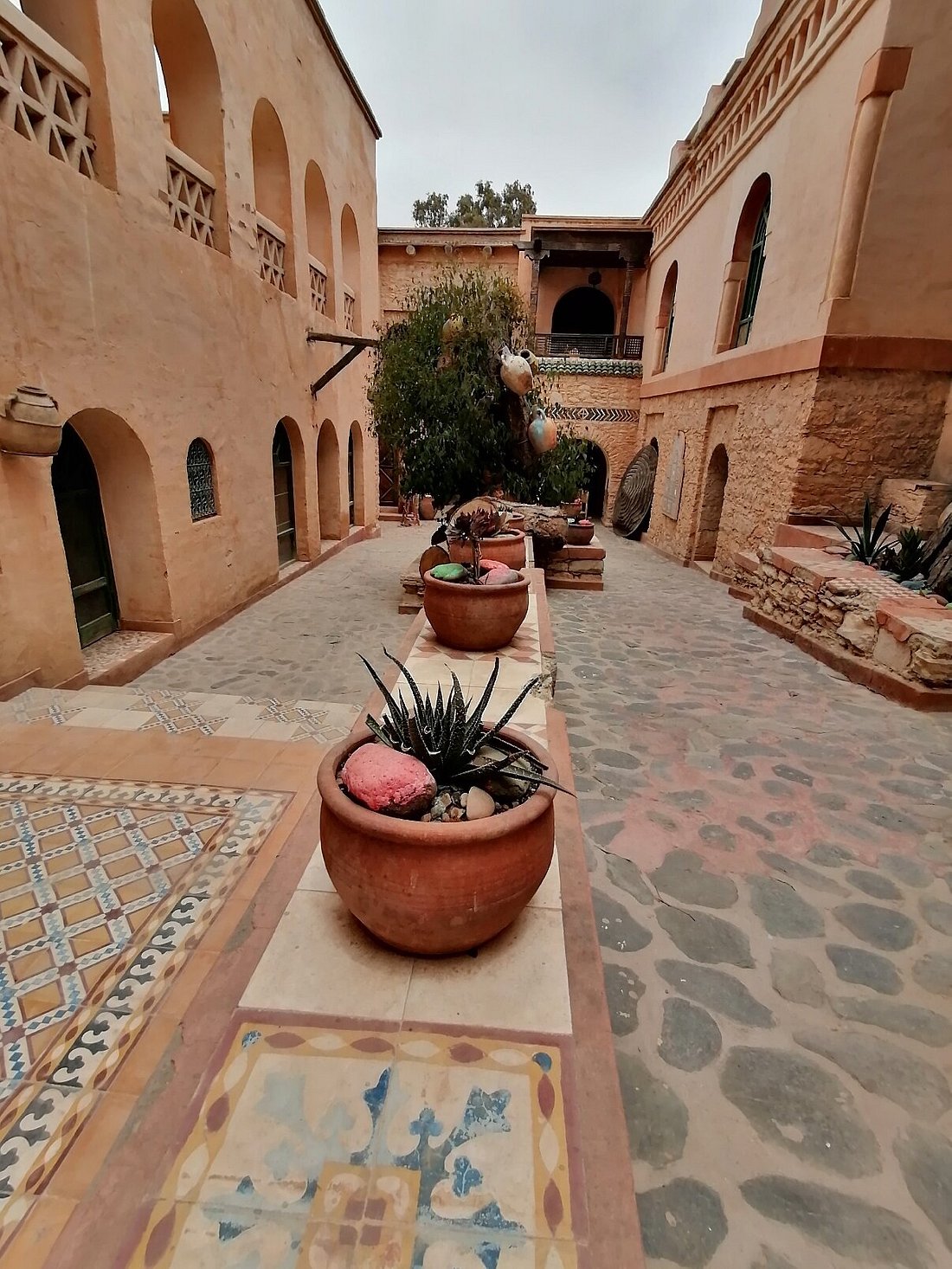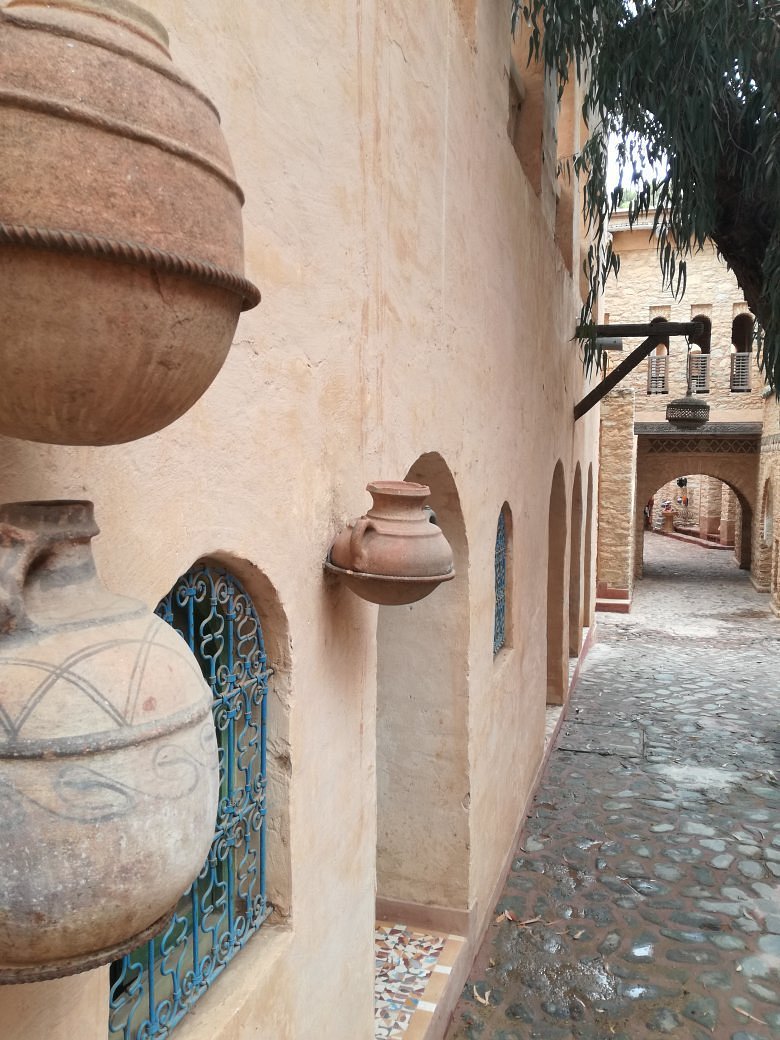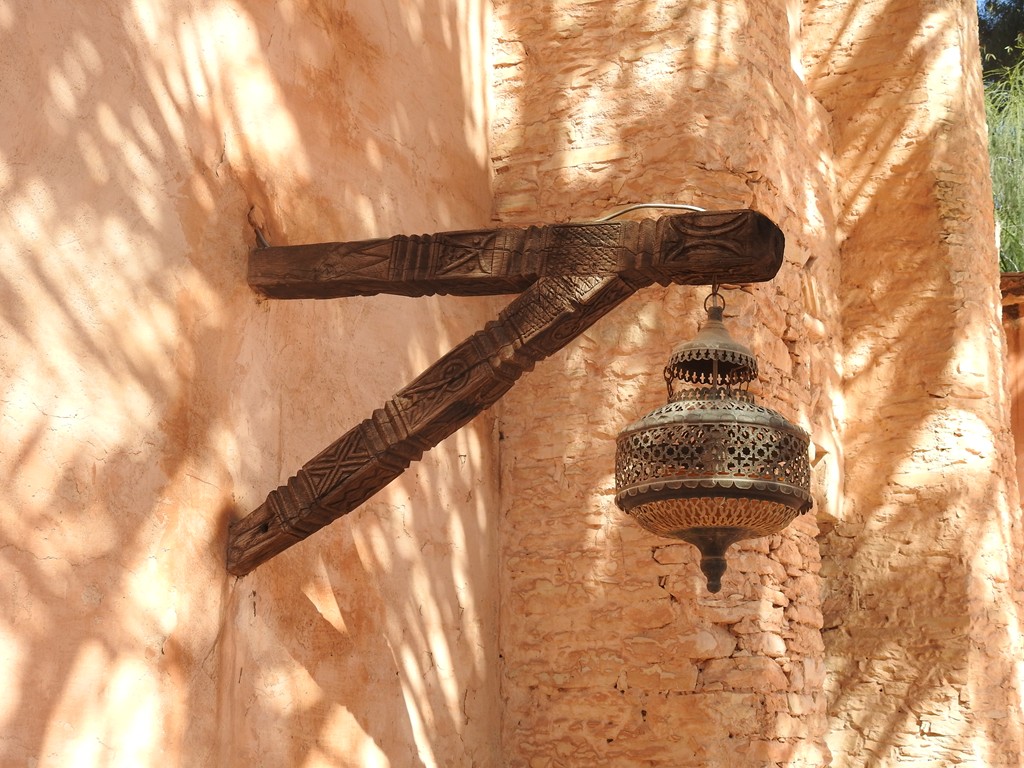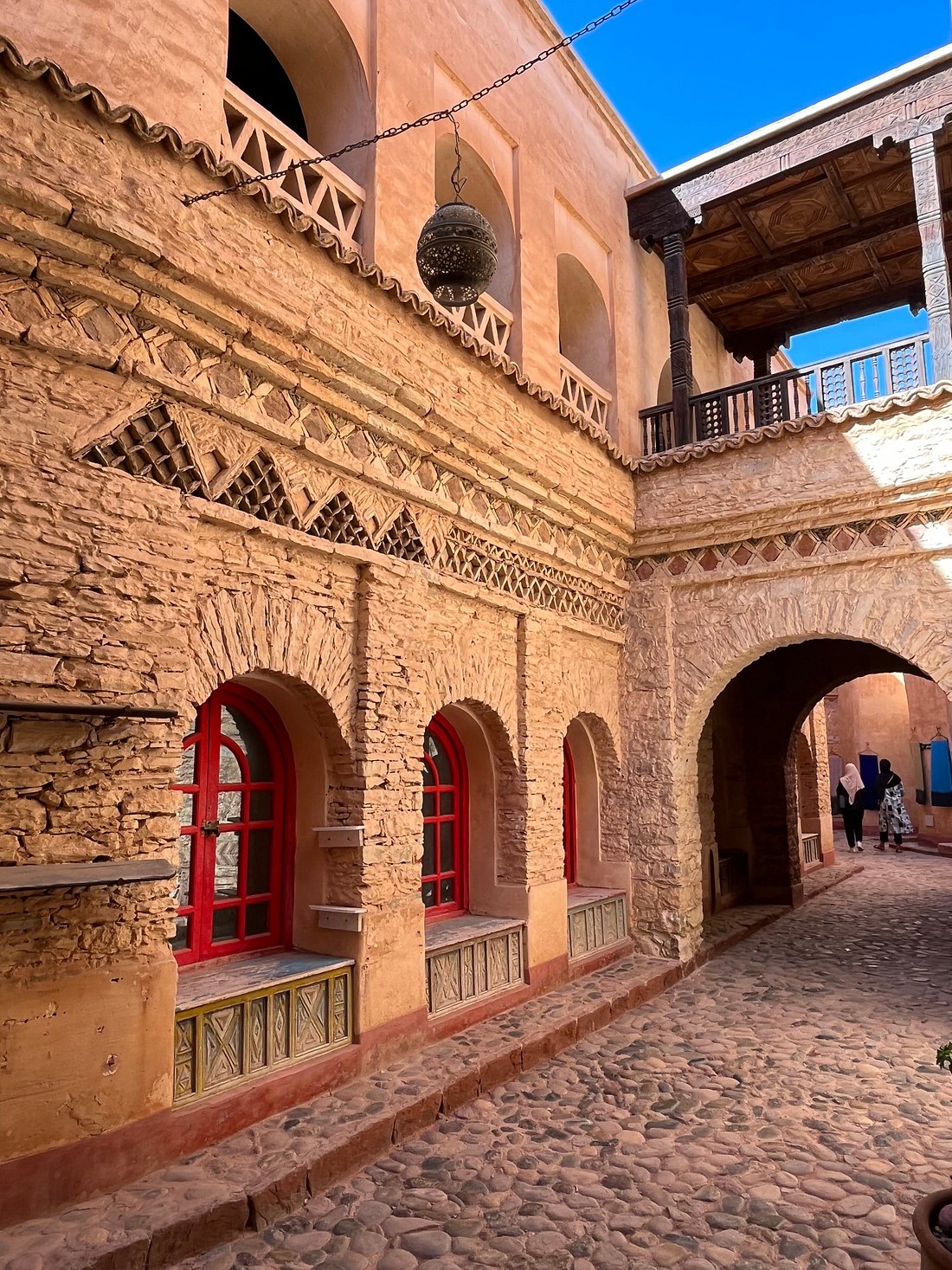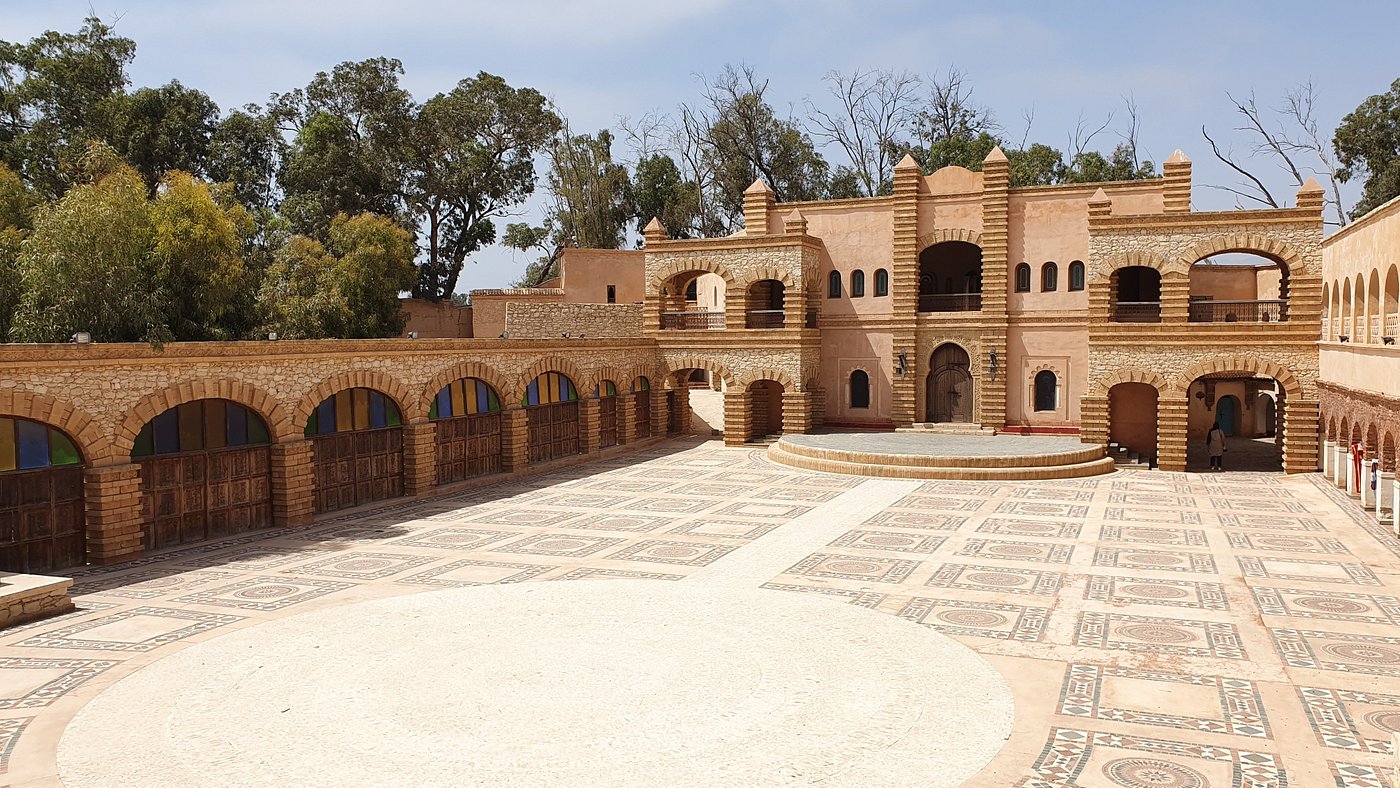Architecture
Heritage of the Souss Massa region
Built in the heart of the eucalyptus forests surrounding Agadir’s urban centre, the Medina unfolds within ochre-coloured ramparts, in impressive meanders of alleyways, terraces, inner courtyards and hidden staircases, passageways and galleries, offering a host of viewpoints for photographers and enthusiasts alike.
Spread out over four and a half hectares, the Medina of Agadir is an architectural masterpiece, a testament to the genius of Amazigh construction, both in terms of its ancient inspiration and its adaptability to the successive influences of the civilisations it has rubbed shoulders with over the centuries.
Still a confidential place, the Medina of Agadir is today, with discretion and delicacy, a high place of promotion of the inheritance of the territory of Souss Massa. An open-air museum.
An invitation to a journey
Facing the entrance square, a majestic stone porch invites visitors to step through to enter the narrow streets of the Medina.
The main part of this splendid structure was built by the Taddart brothers from Argana. The story goes that, after laying the foundations, Coco Polizzi gave the two craftsmen carte blanche to create the elevation and ornamentation.
To please him, they put all their know-how to work, multiplying references to the Mediterranean and Christian origins of the master craftsman, while echoing their approach, Coco Polizzi set about creating the back of the porch, exacerbating, for his part, the Amazigh motifs characteristic of the region and the relics of the building.
Located at a crossroads, this building, named Porte Taddart in memory of the two craftsmen, can be crossed in the shade of its dome and offers several routes for visitors to explore.
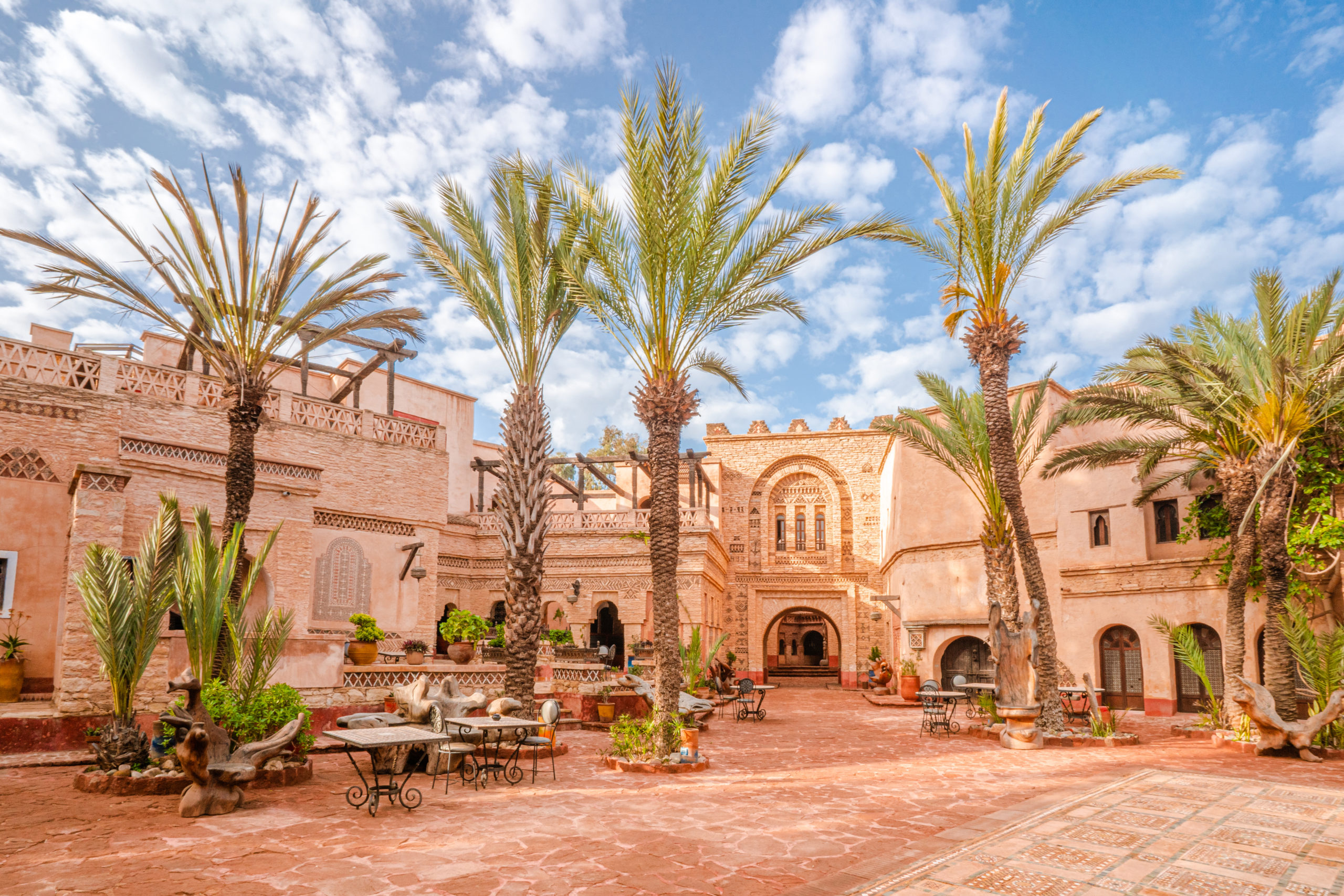
In La Médina d’Agadir, there are unusual materials, revisited materials, and the destinies of sublimated objects.
With a multitude of narrow streets at its heart, La Médina d’Agadir invites visitors to get lost as they stroll along. Nooks and crannies, arcades and hidden doorways, the alleyways seem to play on their similarities and differences, inviting visitors to linger longer.
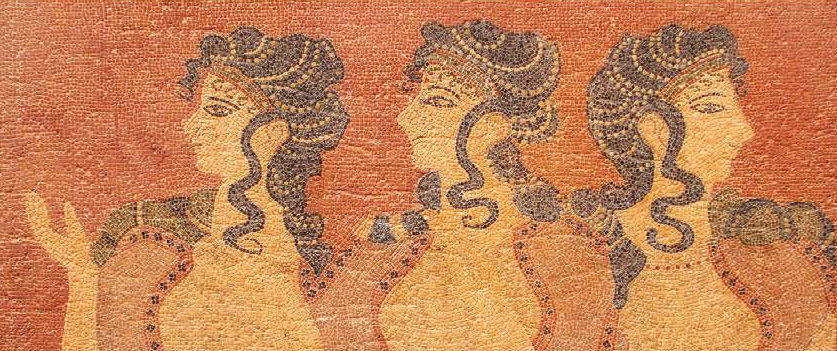
Figurative mosaics
In the Medina, the most figurative mosaics have their origins in the very beginnings of art, more than two millennia before our era. It was in ancient Mesopotamia, the historic region between the Tigris and Euphrates rivers in the Middle East, that the world’s first known mosaic works appeared. These decorative paintings are also largely inspired by works from the Greco-Roman period, such as these profiles of women with long hair encircled by diadems and ribbons.
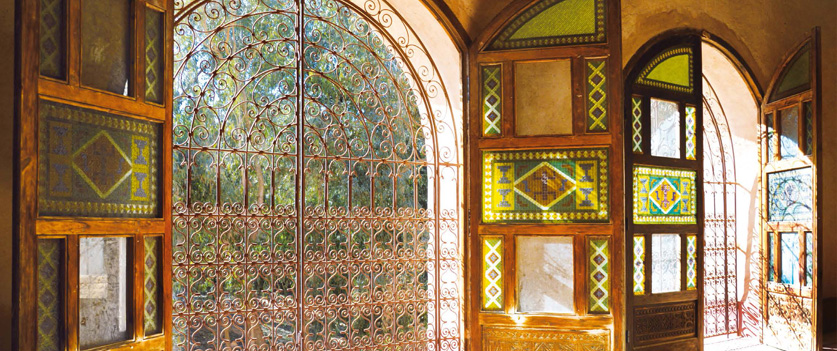
Coloured stained glass
Like a moucharabieh that lets you see without being seen, a brass lantern or a wax photopher, coloured stained-glass windows are the result of a craft focused on the interplay of transparency, light and colour. For these opaque, raised panes, Coco Polizzi and her craftsmen used a technique of gluing tinted glass on either side of a white pane, creating innovative mixes of colours enhanced by Amazigh motifs, through which the scrolls of the wrought-iron window grilles can be seen.
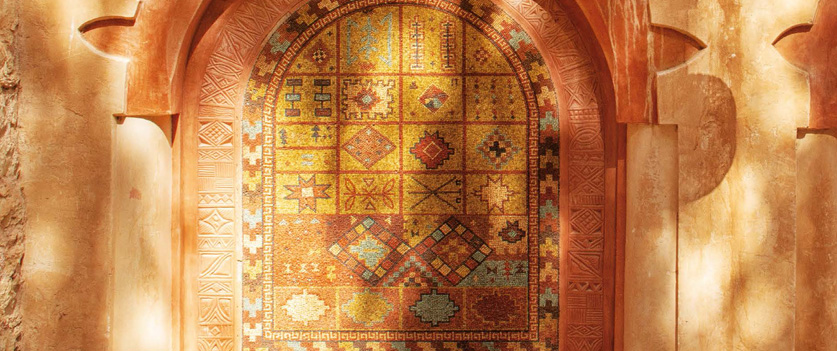
amazigh Mosaic carpets
Enigmatic and bewitching, Amazigh mosaics mimic the region’s famous handmade carpets. Made in workshops in La Médina d’Agadir, the multicoloured pieces replace knotted strands of wool. For centuries, the women of the Atlas have been weaving magnificent carpets and passing on their skills to each other in the heart of the mountains. On the walls of Agadir’s Medina, mosaic carpet frescoes await visitors as they wander through the narrow streets and arcades… A fascinating journey to discover their secret messages.
The amphitheatre
For the builder of the Medina, it was essential for the city to have a space
dedicated to the performing arts. And so it was that this place of culture was sketched out in the very first plans by Coco Polizzi.
The material chosen for its construction is Bouskoura golden stone. Brought from the quarries of Bouskoura, a town famous for its large eucalyptus forest, this stone has a porous, rough surface with small sediments showing through. Above all, it has a unique golden colour, which has become the chromatic signature of the amphitheatre’s columns.
Combining Mediterranean and Oriental lines, the architecture of the amphitheatre combines stone with mud brick and is adorned with a fascinating mosaic floor. A series of arcades frame the space on either side. With a vast esplanade and terraces for the public, the amphitheatre hosts major international festivals and professional and private events throughout the year. A true showplace, the building also boasts spacious dressing rooms for artists to prepare their performances.
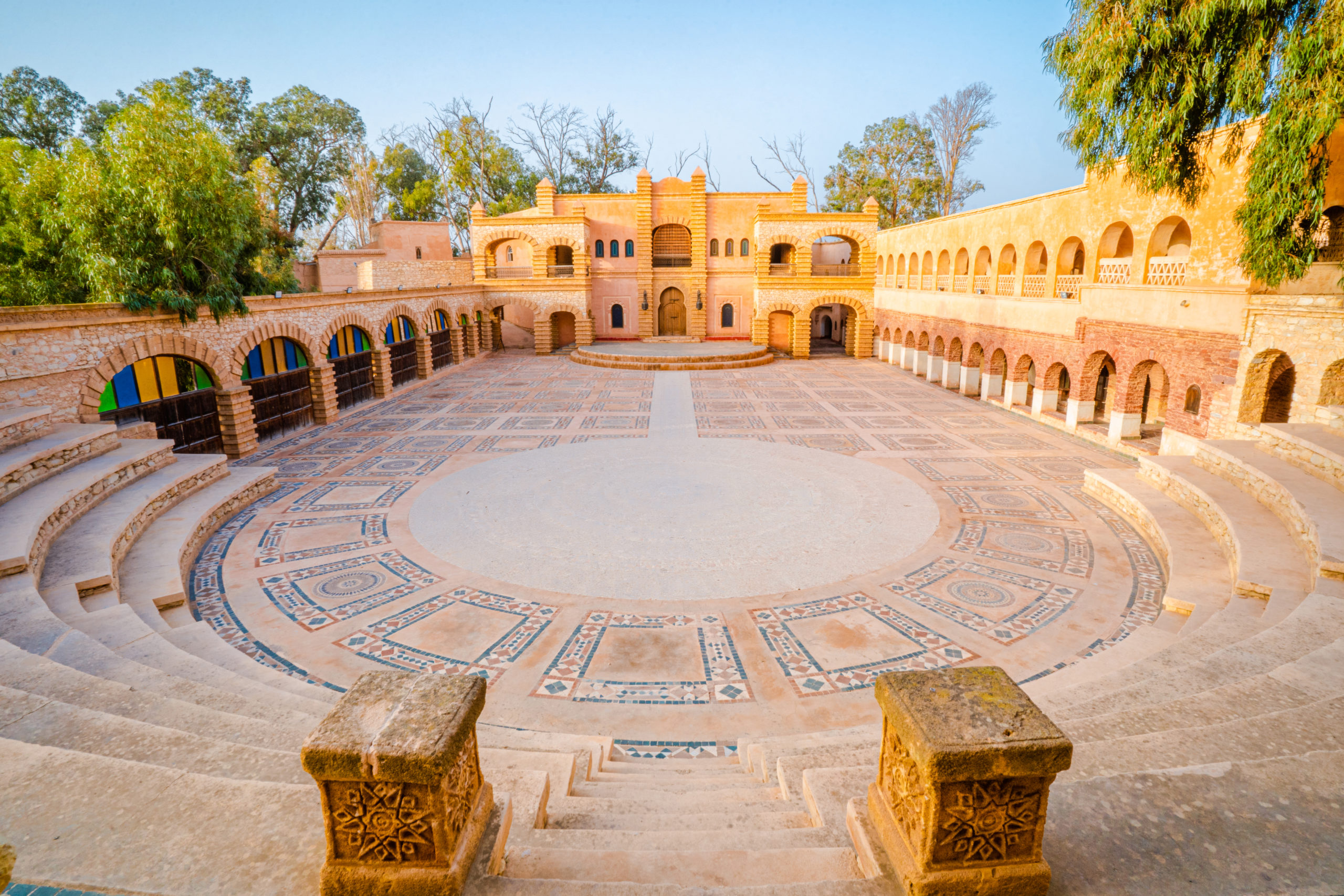

The rosettes
Splendid rosettes combining the artistic codes of the Roman era and the geometry of Moorish zelliges, the floor mosaics of the Medina are truly fascinating, embodying the city’s creative spirit and cosmopolitan identity. Like a mysterious symbolism, a secret algorithm that only the city has the power to decipher, the mosaic rosettes are infinitely varied on the walls, tables and paving stones of La Médina d’Agadir.

Slate pebbles
Slate pebbles are widely used in La Médina d’Agadir, as wall ornaments, paving stones or mosaics. Pieces of rock that have fallen into the wadi beds, these pebbles roll along the water where they are then collected, naturally polished by the elements, in various shapes and sizes depending on the distance covered. This construction technique originated in the Argana region, 70km from Agadir.
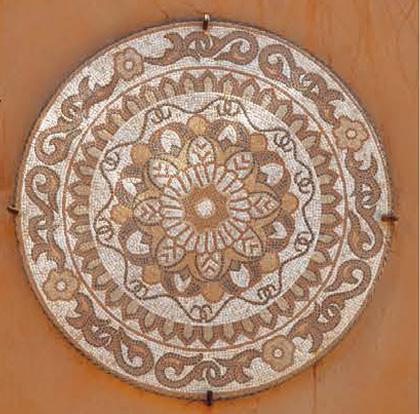
Mosaic frescoes
Entirely created by the master craftsmen of La Médina d’Agadir, the sublime mosaics embellish the squares, alleyways and interiors of the city, expressing the variety of influences of their creators. Their anchor point is the Met Mediterranean, whose rich cultures, past and present, they share. Coco Polizzi and her craftsmen have given free rein to their memories, to the call of their origins, to create these works of art that are an invitation to travel.


